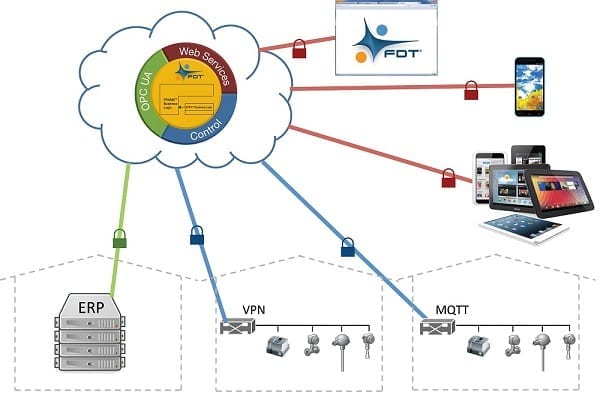
February 2017, Editorial
Lee Lane, Chairman of the FDT Group Board
At our recently concluded Board meeting hosted by Yokogawa in Singapore, we reviewed the progress of our new IIoT platform FITS – FDT Industrial Internet of Things Server. This amalgamation of our OPC UA integration, web services, mobility, and rich control network interoperability promises to be a powerhouse of connectivity and information sharing for the next generation of automation.
To ensure the proper architecture and features for the mobility portion of the platform, we convened a panel of mobility experts from around the world. Over a series of meetings, these experts worked with our Architecture and Specification Committee to craft a mobility architecture that takes advantage of the rich heritage of the FDT standard while allowing any mobile device such as a computer, tablet or smart phone to access the features of FDT. The Board is very grateful to the contributions of these industry experts.
While mobility is front and center for FITS, the capabilities do not stop there. The architecture includes full support of secure web sockets to enable apps for Android, IOS, Windows, or other operating systems to access the API (application programming interface) of FITS. I fully anticipate a new generation of apps that optimize workflow for maintenance, commissioning, calibration and other commonly executed workflows. We have already reviewed a conceptual app that would alert the maintenance person to any devices or systems requiring maintenance activity as they travel throughout the facility or field. It uses geo-location to determine their whereabouts, then it queries the health of the assets in that area. While the app has significant tech appeal, consider the amount of labor savings and downtime avoidance that such an app brings to a facility.
Based on the interest we have received from our OPC Foundation partnership, the OPC UA connectivity of FITS will be popular. Any facility with a mixture of networks with attached devices struggles to provide a simple, seamless integration of the data from the smart devices into higher level systems. Since FITS sits on top of all of the control networks and has native access to all of the networks regardless of topology, harvesting the rich information from these devices through OPC UA is easily done. Enterprise wide leveraging of this data through ERP, MES, and other applications will become a defacto benefit of FITS.
FITS has been designed to be deployed in a cloud, fog, local server, or stand-alone application depending on the requirements of the customer. Interestingly, a single FITS instance can service multiple facilities by accessing the control networks through VPN, MQTT, or other protocols. A FITS instance could also push data to other cloud applications such as Azure by using either OPC UA or an AMQP (Advanced Message Queuing Protocol) Gateway DTM.
The entire FITS project is on short timeline to make it available to our members. Our first membership education program will take place in September so that product managers, system architects, and programmers can begin to incorporate FITS into their product roadmaps. Look for demonstrations of the underlying technologies at our major tradeshows this year.
In closing, let me say welcome to three new members of the FDT Group: Power-Genex of Korea, Elemer-STC of Russia, and Mr. Chris Abbott. It is a pleasure to have you join us in the support of the FDT Standard.